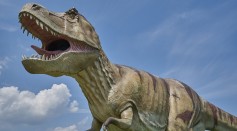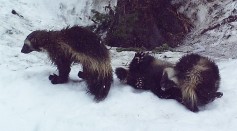carnivores

T.Rex May Have Short Arms Due to Sexual Selection Based on 95 Million-Yea-Old Fossil Discovered in Patagonia, Argentina
Spotted Skunks Discovery: 7 Species Found Existing and They All Do Some Tricks as a Warning Before Spraying

Conservationists Spot Family of Wolverines on Mount Rainier After 100 Years
Scientists Discovered Meat-Eating Mammal Larger Than Any Big Cat Stalking the World Today
New Fossils Of Carnivore Found In Egypt Named Anubis, God Of Underworld
Can Dinosaur Skulls Tell Us Just What They Ate and How?
Half the Size, But Twice the Bite—Study Reports European Wolves Are on the Rise
Most Popular

Largest Marine Reptile Ever Found? Fossils of Colossal Prehistoric Underwater Species Discovered by Paleontologists

600-Year-Old Voynich Manuscript Cracked; Encrypted Text Includes Censored Information on Sex, Contraception, Gynecology

Purple Photosynthesis: Experts Suggest Aliens May Not Be Found on Green Earth-Like Planets

Should You Use Whole-Body Deodorants? Here's What Dermatologists Say






